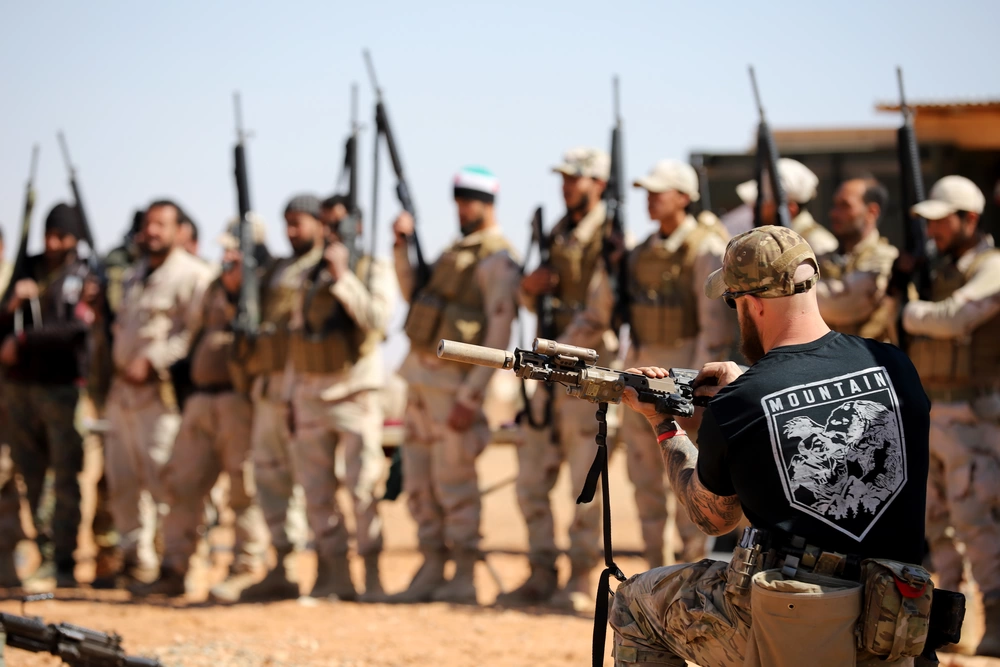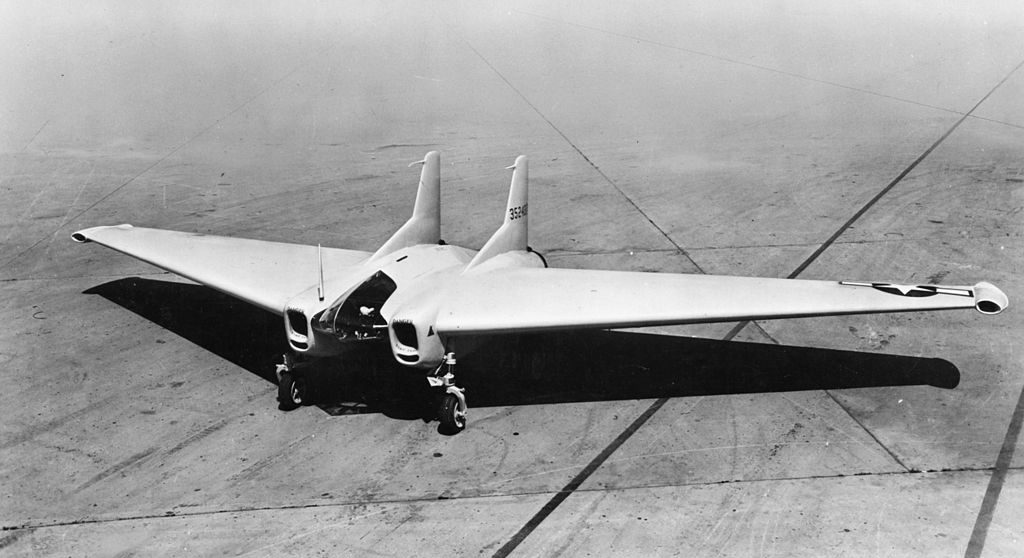The small Special Forces base in al-Tanf, Syria has large implications for regional security
- By Steve Balestrieri
Share This Article

The war in Ukraine is also affecting regional stability in the Middle East, where the entire area could also erupt into open conflict in short order. One of the factors that could ensure peace or cause the war to begin is the tiny Special Forces base in al-Tanf, Syria.
If you’ve never heard of al-Tanf, you’re not alone. Most Americans probably have never heard of the base or what it represents for U.S. interests in the Middle East. But this tiny outpost is a big part of America’s interests in the Middle East despite its size and lack of a large American garrison.
Too many actors in a tense part of the world
The American base at al-Tanf is located in southeastern Syria along the M2 Baghdad-Damascus highway and near the borders with Iraq and Jordan. Although the exact number of troops is classified, there are about 100-200 troops typically stationed there along with SDF fighters.
So, why is it that American troops ended up in this tiny outpost in Syria, a country hostile to the United States?
During the Syrian civil war, ISIS saw an opportunity, rushed in foreign fighters, and captured a wide swath of territory in Syria and Iraq, while trying to set up an “Islamist caliphate.” The U.S. and an international coalition came to the aid of Iraq and, in doing so, partnered with a mixed Arab-Kurdish force in Syria called the Syrian Democratic Forces (SDF) whose mission was to defeat ISIS. The Special Forces and CIA paramilitary forces train the SDF fighters. The base was therefore set up to support the U.S. efforts in the region.

In 2015, Russia started supporting Syrian President Assad and began carpet-bombing rebel-held areas.
Turkey also has forces in the region battling against the SDF.
Iran is also active in the area. Tehran and Hezbollah have created militias that are ostensibly on the Syrian government’s side but answer to Iran first. These militias have attacked the American base in al-Tanf with rockets, artillery, and, more recently, drones.
The Israelis are also involved in the region as Iran has been trying to establish bases in Syria close to the Israeli border for years. Israel has conducted hundreds of airstrikes targeting Iranian troop concentrations, warehouses, and other military targets. The Israelis fly over al-Tanf.
Hostilities broke out in 2018 when a mixed force of 500 Russian mercenaries from the Wagner Group and Syrian troops attacked a small outpost near the Conoco gas plant where 30 Delta Force members and Rangers were based. The Green Berets and Marines at al-Tanf prepared a quick reaction force of 16 troops. The pro-Syrian force had T-72 tanks and armored vehicles and attacked during the night. With the support of aircraft stationed in Qatar, the U.S. forces decimated the attackers. Estimates of the dead number between 250-300, but could have been higher.
Related: Watch: Russian armored personnel carrier destroyed in Russian retreat
A potential powder keg in Syria

Russia invaded Ukraine expecting a quick and easy victory. But the war has turned into a bloody mess for Moscow. With its attention turned to Ukraine, the Russians have withdrawn some of their troops from Syria.
U.S. and Russian troops conduct patrols in the area and have at times had contentious interactions on the ground. Although the two have set up a 34-mile deconfliction zone around the base and a hotline to talk to one another and prevent any potential hostilities, since the U.S. has given enormous support to Ukraine, the chances of hostilities sparking are now much higher.
In turn, that has emboldened Iran to become more aggressive with its proxy militias who are trying to fill the power vacuum that has resulted from the partial withdrawal of Russian troops.
In August and September, al-Tanf was hit with drone attacks and artillery barrages. Three Americans were wounded. The U.S. responded with airstrikes around Deir al-Zor, and after the September attack, the Americans killed three Iranian proxy militiamen.
Related: By using Iranian Shahed-136 drones is Russia admitting that its defense industry can’t keep up?

In turn, Russia, which has turned a blind eye to Israeli airstrikes in the region as long as the IAF doesn’t target Russian troops or equipment, is furious because the government of Israel has accused it of war crimes in Ukraine. So, Moscow may end cooperation with Tel Aviv which would further embolden Iran to act more aggressively. Many analysts believe Iran will attempt to test Israeli air defenses with its large and growing drone fleet.
But for Iran to get drones, missiles, and other arms and ammunition to those forward positions, it has to bring them via the highway from Tehran to the Syrian border with Israel. And that highway goes through al-Tanf.
With ISIS losing more and more influence in the region, there will be a call for the U.S. to exit Syria. Yet, as tensions in the Middle East spike, the base’s importance to Washington in preventing Syria from becoming a vassal state, much like Lebanon, increases.
Steve Balestrieri is a proven military analyst. He served as a U.S. Army Special Forces NCO and warrant officer in the 7th Special Forces Group. In addition to writing for Sandboxx.com, he has written for 19fortyfive.com and SOFREP.com; he has covered the NFL for PatsFans.com for over 11 years. His work was regularly featured in the Millbury-Sutton Chronicle and Grafton News newspapers in Massachusetts.
Feature Image: A U.S. Soldier stands near a M2 Bradley Infantry Fighting Vehicle in Northeastern Syria on December 16, 2020. (U.S. Army Reserve photo by Spc. Tarako Braswell)
Read more from Sandboxx News
- Counterterrorism in an age of great-power competition
- We swore a blood oath: Former CIA officer reflects on al-Zawahiri killing
- How Ukrainian soldiers are using drones to fight Russians on the ground
- AbramsX tank launches kamikaze drones and goes electric
- A Delta Force perspective on Russia’s paratrooper operations
Related Posts
Sandboxx News Merch
-

‘AirPower’ Classic Hoodie
$46.00 – $48.00 Select options This product has multiple variants. The options may be chosen on the product page -

‘Sandboxx News’ Trucker Cap
$27.00 Select options This product has multiple variants. The options may be chosen on the product page -

F-35 ‘Lightning’ Framed Poster
$45.00 – $111.00 Select options This product has multiple variants. The options may be chosen on the product page
Steve Balestrieri
Related to: Military Affairs

XP-79: The US fighter built to ram enemy bombers

Lockheed Martin’s upcoming AGM-158 XR stealth missile is scary

The US Air Force could sink Iran’s new drone carrier with a single shot

The UK is recycling old jets to build its next-generation Tempest fighter
Sandboxx News
-

‘Sandboxx News’ Trucker Cap
$27.00 Select options This product has multiple variants. The options may be chosen on the product page -

‘AirPower’ Classic Hoodie
$46.00 – $48.00 Select options This product has multiple variants. The options may be chosen on the product page -

‘AirPower’ Golf Rope Hat
$31.00 Select options This product has multiple variants. The options may be chosen on the product page -

‘Sandboxx News’ Dad Hat
$27.00 Select options This product has multiple variants. The options may be chosen on the product page
